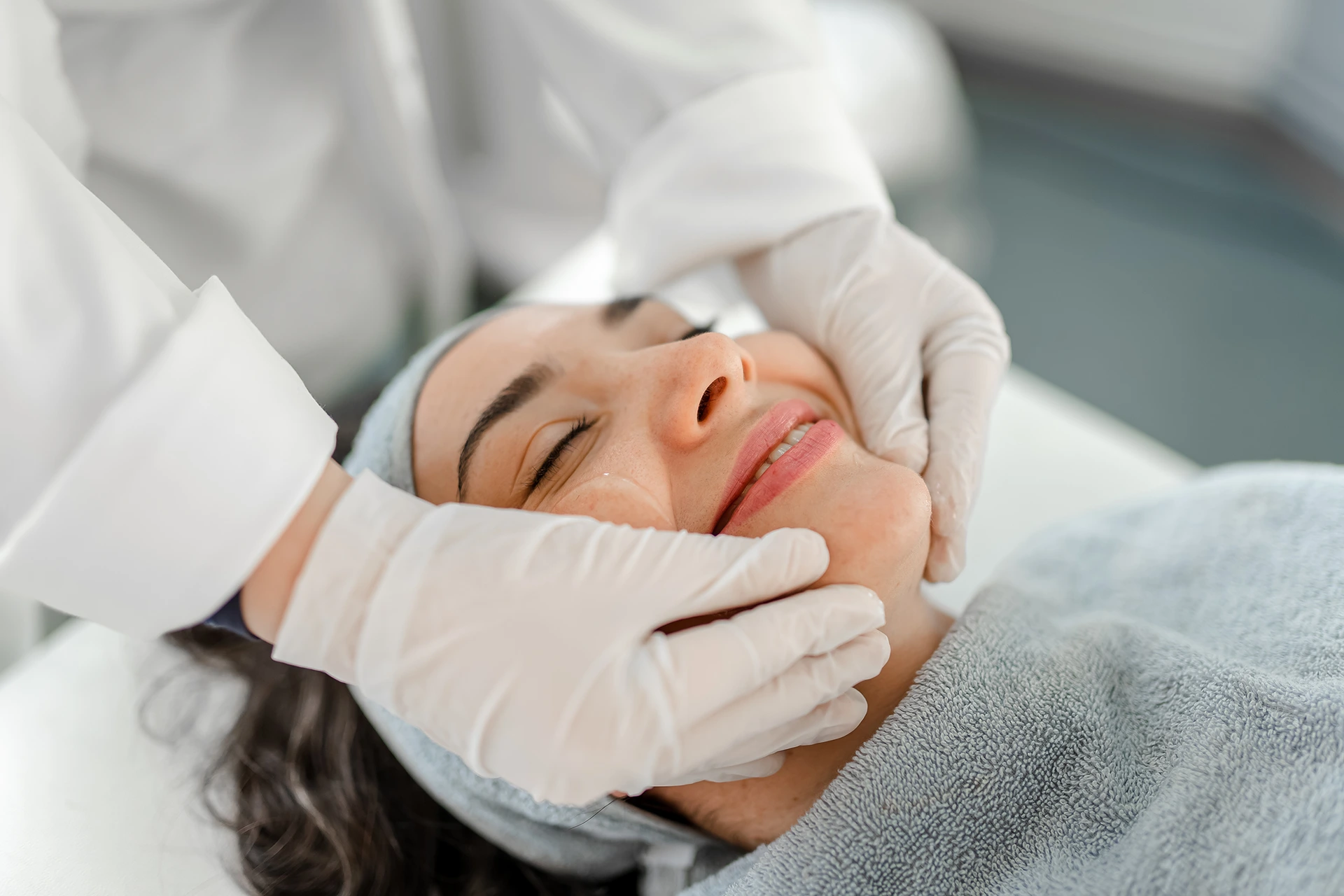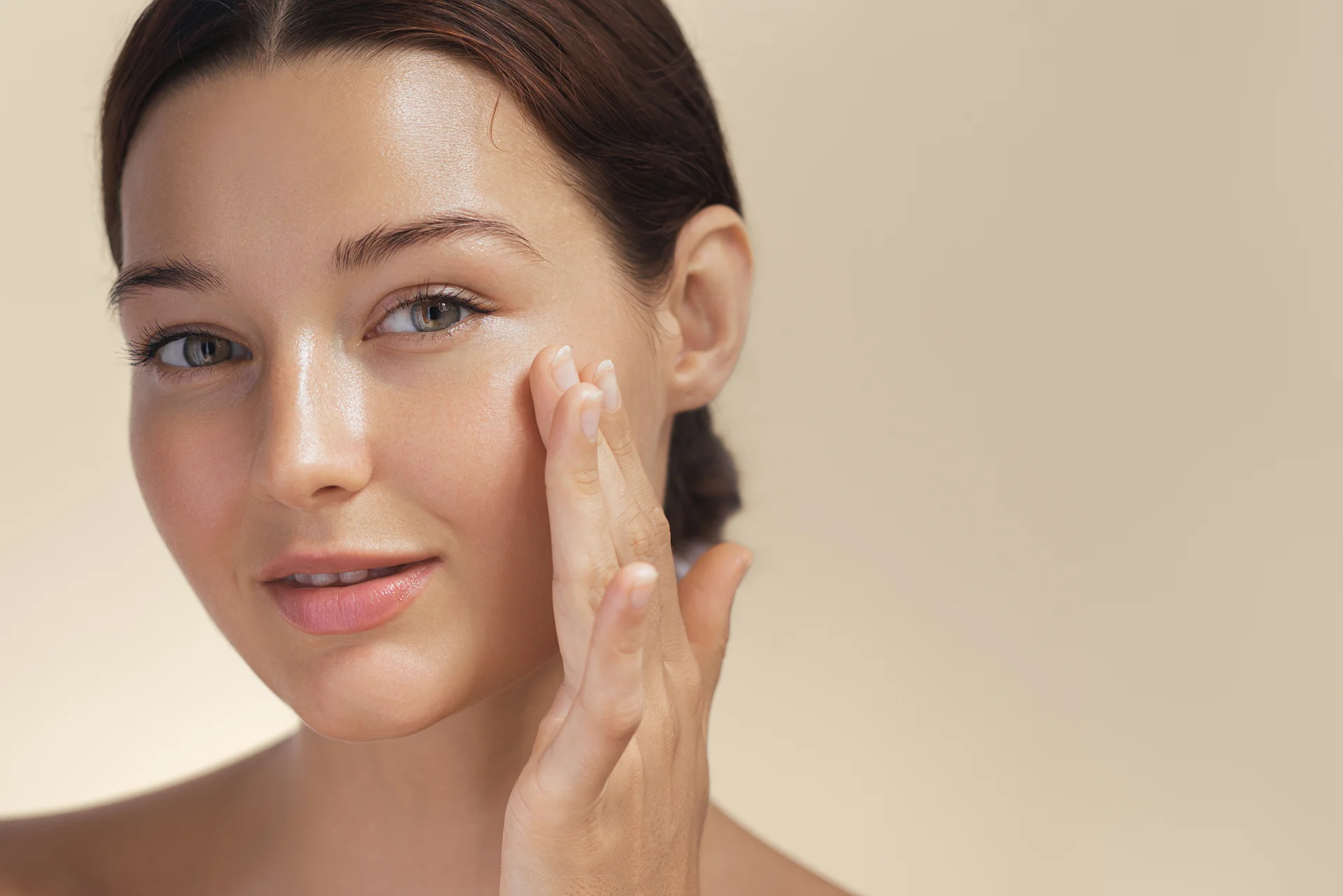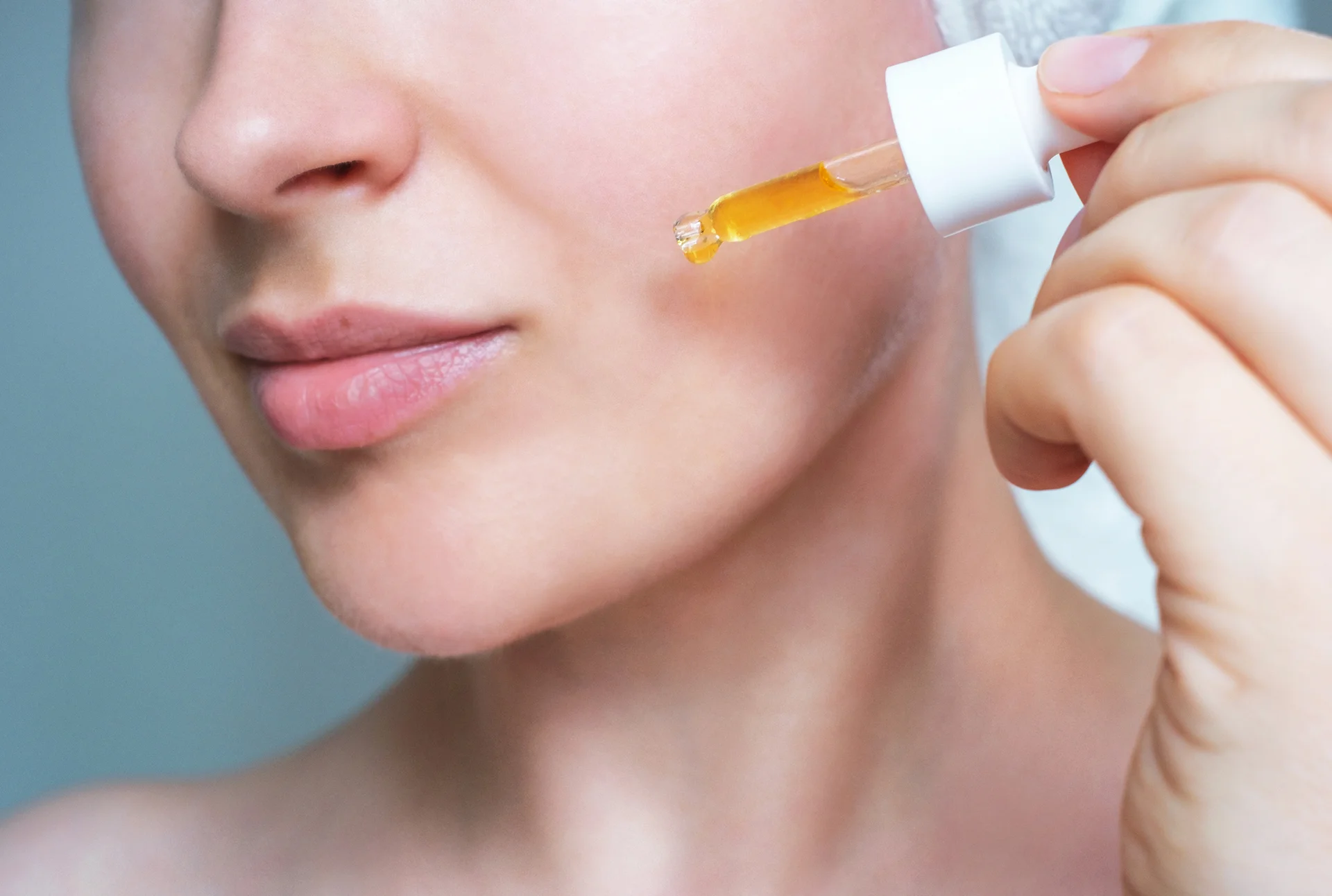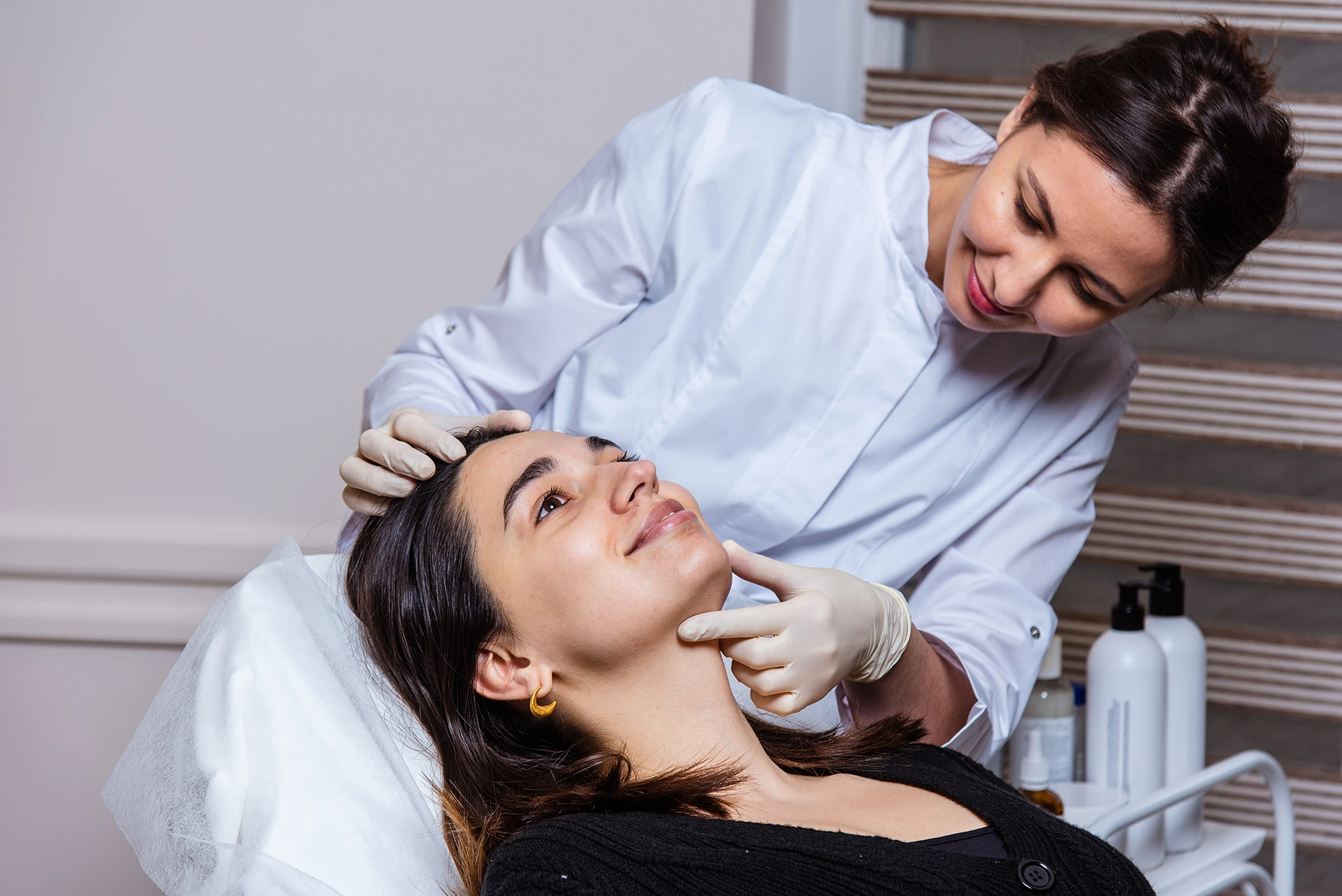Exploring the Value of Dermaplaning and Its Cost
If you’re looking to achieve smoother, more radiant skin, then dermaplaning might be the treatment for you.
In this article, we’ll take a closer look at what affects dermaplaning costs so that you can make an informed decision about whether or not this treatment is right for you.
What is Dermaplaning?
Dermaplaning is a non-invasive cosmetic treatment that involves using a surgical scalpel or sharp blade to gently scrape away the outer layer of dead skin cells and vellus hair, commonly known as peach fuzz, from the face.
The treatment is a great option for those who want to improve their skin texture, get rid of unwanted facial hair and reduce the appearance of acne scars. In addition, dermaplaning can also help skincare products penetrate deeper into the layers of skin for a more effective treatment. Keep reading to learn more about the benefits of dermaplaning.
Benefits of Dermaplaning
Dermaplaning is an excellent cosmetic procedure that has both immediate and long term benefits for your skin. Not only is it a fast and non-invasive procedure, but it’s also inexpensive, making it easily accessible for anyone who desires to have clearer and smoother skin.
One of the most significant advantages of dermaplaning is its ability to reduce acne breakouts, fine lines, and wrinkles. By gently scraping away the outer layer of dead skin cells and vellus hair, dermaplaning diminishes comedones such as blackheads and whiteheads while also refining pore size. As a result, your skin will appear much smoother, with an improved texture and radiance.
Dermaplaning also supports healthy collagen levels, helping to keep your skin firm and elastic. It lightens dark spots and evens out skin tone while also reducing oil production, which is great for those with oily skin.
Lastly, dermaplaning is a fantastic way to revitalize sensitive skin while decongesting your pores. This procedure is gentle on delicate skin and helps to reduce inflammation, making it perfect for those with sensitive skin types.
Overall, dermaplaning is a cosmetic treatment that provides a multitude of benefits for your skin. It’s a fast, effective, and affordable way to achieve radiant, healthy-looking skin. With its proven ability to reduce acne breakouts, fine lines, dark spots, pore size, and support healthy collagen levels, it’s easy to see why dermaplaning is quickly becoming a popular skincare treatment choice.
Cost Factors
One of the main factors is the type of treatment provider you choose, as costs can vary depending on the experience and expertise of the provider. The size and severity of the area being treated can also impact the price, as larger areas or more severe skin conditions may require more time and effort to treat. The type of products used during the procedure can also play a role in cost, with higher quality and specialized products often resulting in a higher price.
The complexity of the procedure itself can also impact cost, as more intricate procedures may require more time, skill, and resources. Understanding these cost factors can help you plan for your dermaplaning treatment and get a more accurate estimate of the total cost.
Type of Treatment Provider
When it comes to dermaplaning treatment, it is important to choose a qualified and experienced treatment provider who can offer a safe and successful procedure.
There are several types of treatment providers that offer dermaplaning treatment, including licensed and board-certified dermatologists or estheticians, who specialize in skincare and have received extensive training in performing cosmetic procedures.
Licensed and board-certified dermatologists have undergone several years of medical training and hold a medical degree. They are experts in diagnosing and treating various skin conditions and have extensive knowledge of the anatomy and physiology of the skin.
Dermatologists who perform dermaplaning treatment can provide a customized treatment plan based on the patient’s skin type and condition to achieve the best possible results.
Similarly, licensed estheticians are professionals trained in skincare and aesthetics. They specialize in non-medical procedures, such as facials, waxing, and dermaplaning. Estheticians who perform dermaplaning treatment have received specialized training and can provide a safe and effective treatment that can improve the texture and tone of the skin.
When choosing a treatment provider, it is crucial to select one who has extensive experience and a proven track record of successful and safe dermaplaning treatments. The treatment provider should use a sterile surgical scalpel for each patient and adhere to the latest safety and hygiene standards, minimizing the risk of any complications.
Size and Severity of Area Treated
Dermaplaning can effectively target different skin sizes and severities, making it suitable for a wide range of individuals. It can be used on all skin types and tones, making it a versatile treatment that can be customized to meet individual needs.
Dermaplaning is particularly helpful in removing dead skin cells and unwanted peach fuzz that can accumulate on the outer layers of the skin, revealing softer, smoother skin underneath. This treatment can help to improve skin texture and tone, leaving the skin looking brighter and more youthful.
However, those with active acne or cold sores should avoid dermaplaning until the condition has cleared up. In these cases, direct sun exposure should also be limited, and it is essential to seek the advice of an expert provider before undergoing the treatment.
Dermaplaning can treat various skin sizes and severities, and it is suitable for all skin types and tones. It can effectively remove dead skin cells and unwanted peach fuzz, providing a smoother and brighter complexion. Individuals with active acne or cold sores should avoid dermaplaning until these conditions have cleared up and should seek advice from an expert provider before undergoing treatment.
Type of Products Used
The type of products used during a dermaplaning procedure can have a significant impact on the overall cost of the treatment. It is essential to choose high-quality products that are designed specifically for this cosmetic procedure. Opting for a lower quality or less expensive option can result in adverse effects, such as irritation and damage to the skin.
While investing in high-quality products post-dermaplaning is recommended, it is essential to note that price does not always correlate with quality. Some high-end products may not provide the desired results, while others may be more affordable and still be effective.
After a dermaplaning procedure, it is necessary to utilize gentle face cleansers, serums, and a broad-spectrum SPF to protect and nourish the skin. Avoid using any products that may cause irritation, such as those with harsh chemicals or fragrances.
One option for post-dermaplaning products is SkinCeuticals®. They offer a range of products designed to repair and rejuvenate the skin after a treatment. Their high-quality serums and moisturizers can help to improve skin texture, minimize fine lines, and protect against environmental damage.
Complexity of Procedure
Dermaplaning is a cosmetic procedure that involves the use of a sharp surgical blade or scalpel to remove the outer layer of dead skin cells and vellus hair, commonly known as peach fuzz.
The complexity of a dermaplaning procedure can vary based on several factors, including the size and severity of the area being treated and the type of products used during the treatment.
In some cases, hair follicles may be difficult to reach, or certain areas of the skin may have multiple layers, making it more challenging to achieve the desired results. These potential difficulties can impact the overall cost of the procedure as they may require more time and skill to address effectively.
To ensure that a dermaplaning treatment is successful and safe, it is important to seek out an expert provider who is knowledgeable and experienced in performing the procedure. An expert provider will be able to assess the patient’s skin type and texture, determine the appropriate products to use, and tailor the treatment to the individual’s specific needs.
Average Cost of Dermaplaning

The cost of dermaplaning can vary depending on various factors such as geographic location, treatment provider, and treatment goals. On average, the national cost range for a single dermaplaning session falls between $75 and $200.
However, it’s important to keep in mind that there may be variations in cost between different cities and states due to differences in overhead expenses and competition between providers. It’s always a good idea to research and compare prices between different treatment providers in your area to ensure you’re getting the best value for your money.
National Average Cost Range
The national average cost range for a single dermaplaning session falls between $75 and $200. However, it’s worth noting that the cost of dermaplaning treatments can vary greatly based on several factors such as the geographic location, provider experience, and type of treatment.
In some cities or states, the cost of dermaplaning may be lower due to lower overhead expenses and a more competitive market. In contrast, some areas with a higher cost of living and fewer treatment providers may lead to higher prices.
On the low end, some areas may offer dermaplaning treatments for as low as $75 per session. On the high end, prices can reach up to $300 per session or more if the treatment is performed by a board-certified dermatologist or an expert provider.
It’s important to keep in mind that the type of treatment may also impact the cost. For example, a dermaplaning treatment combined with a chemical peel or other facial treatments may cost more than a single dermaplaning session. Before booking an appointment, it’s recommended to inquire about the price ranges and any possible additional costs associated with each treatment.
Overall, the national average cost range for dermaplaning treatments remains within an affordable price range. However, it’s always wise to research and compare prices between different treatment providers in your area to ensure you’re getting the best value for your money.
Variations Between Cities and States
The cost of dermaplaning treatments can fluctuate significantly depending on the location. Typically, larger cities and states tend to have a higher demand for cosmetic procedures, leading to higher prices due to increased competition among treatment providers. Upscale neighborhoods with a higher cost of living may charge more for dermaplaning treatments to cover their expenses.
According to the American Society of Plastic Surgeons, the national average cost range for dermaplaning treatments falls between $75 and $200 for a single session. However, this cost can vary greatly depending on the location.
For instance, some states such as California and New York have a higher cost of living and a more substantial demand for cosmetic treatments, resulting in higher dermaplaning costs. In contrast, states with a smaller population, such as Wyoming and Montana, may offer lower prices due to lower demand and less competition in the area.
Here are the top five states and cities with the highest and lowest dermaplaning costs based on the national average:
Top 5 States with the Highest Dermaplaning Costs
- California
- New York
- Florida
- Texas
- Illinois
Top 5 States with the Lowest Dermaplaning Costs
- Wyoming
- Montana
- West Virginia
- South Dakota
- Arkansas
Top 5 Cities with the Highest Dermaplaning Costs
- New York City, New York
- Los Angeles, California
- Chicago, Illinois
- Miami, Florida
- Houston, Texas
Top 5 Cities with the Lowest Dermaplaning Costs:
- Fayetteville, Arkansas
- Little Rock, Arkansas
- Cheyenne, Wyoming
- Rapid City, South Dakota
- Billings, Montana
Overall, location plays a significant role in the cost of dermaplaning treatments. It’s crucial to research and compare prices between different treatment providers in your area to ensure you’re getting a reasonable price for your dermaplaning treatment.
Other Factors to Consider in Dermaplaning Costs
When looking into dermaplaning costs, it’s essential to consider several factors beyond just the location. Some of these factors include the initial consultation fees and personal consultation charges.
There may be extra costs for additional treatments such as chemical peels or facial hair removal. Another factor to think about is the quality and sharpness of the surgical blade used. In the following sections, we’ll explore each of these factors in more detail to help you make an informed decision when choosing a dermaplaning treatment provider.
Person Consultation & Initial Consultation Fees
When considering dermaplaning costs, you shouldn’t just think about the actual treatment itself. It’s also crucial to factor in the importance of personal consultation and initial consultation fees. A face-to-face meeting with your dermaplaning provider is often the first step in the treatment process, and it can play a vital role in ensuring the success of your procedure.
One of the main benefits of a consultation is that it provides an opportunity for you to discuss your unique skin concerns and goals directly with your provider. During this meeting, your provider will also evaluate your skin type, texture, and tone to determine whether or not dermaplaning is the best option for you. Your provider can explain the potential risks, benefits, and expected outcomes associated with the treatment.
As a patient, it’s essential to come prepared with a list of questions to ask your provider. Some of the things you should inquire about include pricing ranges, the practitioner’s qualifications and experience, and whether additional treatments such as chemical peels or facial hair removal are necessary for achieving optimal results.
While some providers may offer a complimentary initial consultation, some may charge a fee for the appointment. This fee, which can range anywhere from $50 to $150, usually goes toward the cost of the treatment if you decide to proceed with dermaplaning. The cost of the initial consultation is an essential factor to consider when calculating the total cost of the treatment.
Additional Treatments Such as Chemical Peel or Facial Hair Removal
While dermaplaning is an effective way to exfoliate and remove peach fuzz or vellus hair from the face, some individuals may opt for additional treatments to achieve their desired outcome. Two common treatments used in conjunction with dermaplaning are chemical peels and facial hair removal.
Chemical peels use a chemical solution that’s applied to the skin’s outer layers. The solution exfoliates the skin, removing dead skin cells, and can help to reduce the appearance of acne scars, dull skin, and clogged pores. Moreover, chemical peels can also smooth out the skin’s texture, reduce fine lines and wrinkles, and boost collagen production.
Another treatment that one may consider is facial hair removal. Dermaplaning can only remove the peach fuzz or vellus hair on the face, and it cannot remove thicker hair like that found on the eyebrows or upper lip. For those who want to remove any remaining unwanted hair, threading and waxing are popular methods to consider.
Threading uses a thin thread that is twisted and rolled over the hair, removing it from the follicle. Waxing involves the use of warm wax that is applied to the skin and removed along with unwanted hair.
When considering additional treatments such as chemical peels or facial hair removal, it’s crucial to have a discussion with your dermaplaning provider. They can evaluate your skin type, texture, and tone to determine which treatments are best suited for your desired outcome. By combining these treatments with dermaplaning, you can effectively achieve softer, smoother, and more radiant-looking skin.
Sharpness & Quality of Surgical Blade Used
When it comes to dermaplaning, the sharpness and quality of the surgical blade used can have a significant impact on the overall cost of the treatment. It’s crucial to ensure that the surgical blade used is of high quality and properly maintained sharpness to avoid potential injury and ensure effective exfoliation.
Using poor-quality blades can potentially cause skin damage, scarring, and even increase recovery time. As a result, it’s recommended to seek expert providers who use sterile blades, advanced technology, and are board-certified dermatologists.
By utilizing a clean and sharp surgical scalpel, dermaplaning treatment efficiency can be greatly improved, and the risk of unwanted side effects can be minimized. Furthermore, recovery time can also be improved, as properly exfoliated skin is more receptive to skincare products.
FAQ Section: Dermaplaning Cost and Pricing
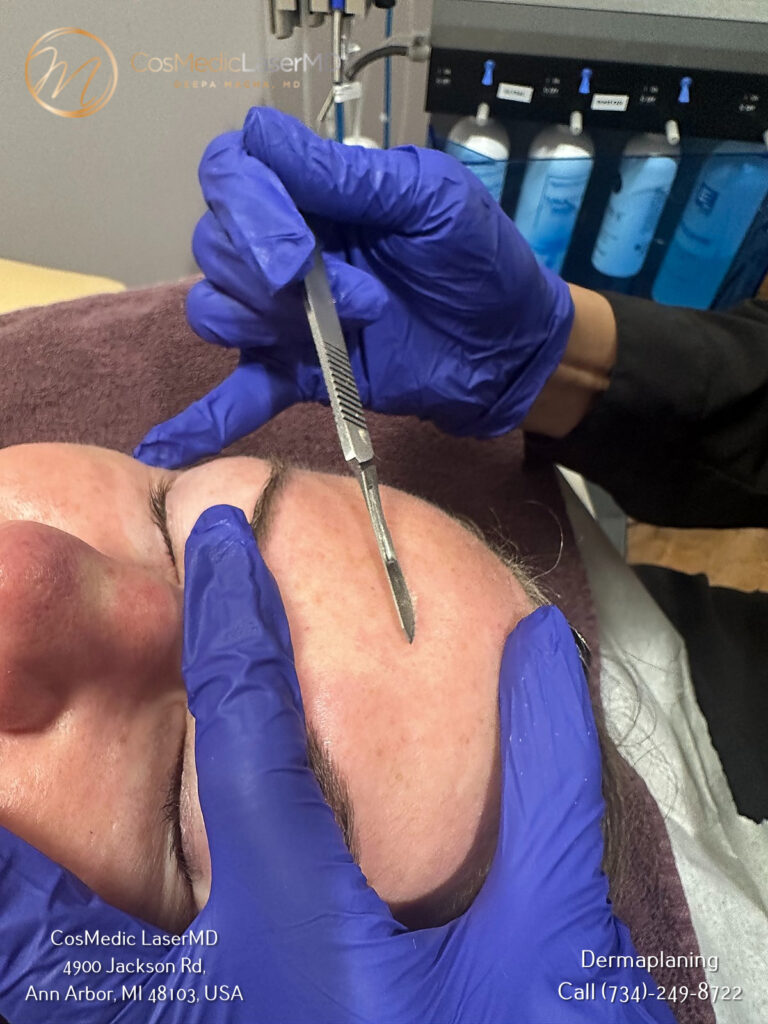
How much does dermaplaning cost?
The cost of dermaplaning can vary depending on several factors, such as location, provider expertise, and additional services offered. On average, dermaplaning costs can range from $50 to $150 per session. It’s best to consult with a local aesthetician or spa to get accurate pricing information.
What is the average cost for dermaplaning?
The average cost for dermaplaning treatments typically falls between $75 to $200 per session. However, keep in mind that prices can vary depending on factors like geographical location and the reputation of the provider.
How much is a dermaplane facial?
The cost of a dermaplane facial can range from $75 to $200 or more, depending on various factors such as the location of the spa, additional treatments included, and the expertise of the aesthetician. It’s recommended to inquire with local spas or skincare clinics for specific pricing details.
Is dermaplaning expensive?
Compared to other skincare treatments, dermaplaning is generally considered an affordable option. While prices may vary, dermaplaning is often a cost-effective way to achieve smoother and brighter skin. It’s advised to research local providers for accurate pricing information in your area.
How much does a dermaplaning treatment cost?
The cost of a dermaplaning treatment can range between $50 to $200 per session. However, the exact price can be influenced by factors such as the location, the experience of the aesthetician, and any additional services or products offered during the treatment.

